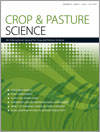CP15250Economic and environmental implications of wheat-crop sequences on organic dairy-farm simulations
The aim of this study was to determine the sustainability of eight 3-year crop sequences compared with a perennial forage baseline in long-term (25-year), well-managed, medium-sized organic dairy farm simulations. Growing winter wheat provides long-term environmental and economic benefits, although for spring wheat, much of this benefit is lost. Use of maize silage in place of grass, winter or spring wheat, or soybean was less profitable. Most cropping system scenarios were less economically favourable than producing and feeding exclusively grass silage; however, inclusion of soybean increased economic benefits.




